KEY INFORMATION
- I led a project to create a system that would enable clients to customise their chatbots.
- This had previously been done on a consultancy (one to one) basis and needed to be systematised.
- I used user and competitive data to suggest a way to balance customisation needs and ability to scale.
- I created a large set of utterances in two popular tones, while still allowing exceptions.
- The ‘out of the box’ model was taken up by clients for 70%+ utterances and led to a more efficient use of samples for the training set.
- In order to make the process even more efficient, I created a spreadsheet that generated the client file for the NLP model.
THE PROBLEM
HelloDone make chatbots powered by a proprietary natural language processing (NLP) model.
The bots are used by retailers to help their customers track and manage their deliveries in WhatsApp and Messenger, along with answering any questions they might have about the order, the delivery, returns or shopping in general.
The chatbots use NLP to understand what people are asking for and give pre-designed responses in return.
The problem with pre-written responses is that clients all have different voices and tones but creating a individual bespoke bots for hundreds of clients is not scalable.
The team needed a system for customisation.
THE PROCESS
Understand user needs
Competitive analysis
Design
Create a system
UNDERSTAND USER NEEDS
We had a fantastic source of data about retailers' customers: their conversations. They were already telling us what they wanted to know. I could look both quantitatively and qualitatively at what the most common queries were and what people might then ask after they had the answer.
I could also look at the language people used and how they asked questions or followed up with responses, so that sample design could reflect real users' phraseology.
I'm a firm believer in not reinventing the wheel, our clients already had a deep knowledge of their customers. Working with stakeholders across multiple businesses was another route into understanding what their customers want to know in the "final mile" of the delivery process.
COMPETITIVE ANALYSIS
It wasn't enough to just look at our existing client base. If we were to expand, who would our dream clients be? How did they talk to their customers? What tone would their chatbot have?
A deep dive into retailer help centres and customer support systems showed that while brands had their own voices and tones, if you had to narrow them down to two styles of communication, you could, at least for an MVP.
These styles were really just degrees of formality. I classified them as "Polite and friendly" or "Chatty and informal".
Polite and friendly
Professional
Clear
Pleasant
Straightforward
Chatty and informal
Upbeat
Friendly
Emojis
Idiomatic
DESIGN

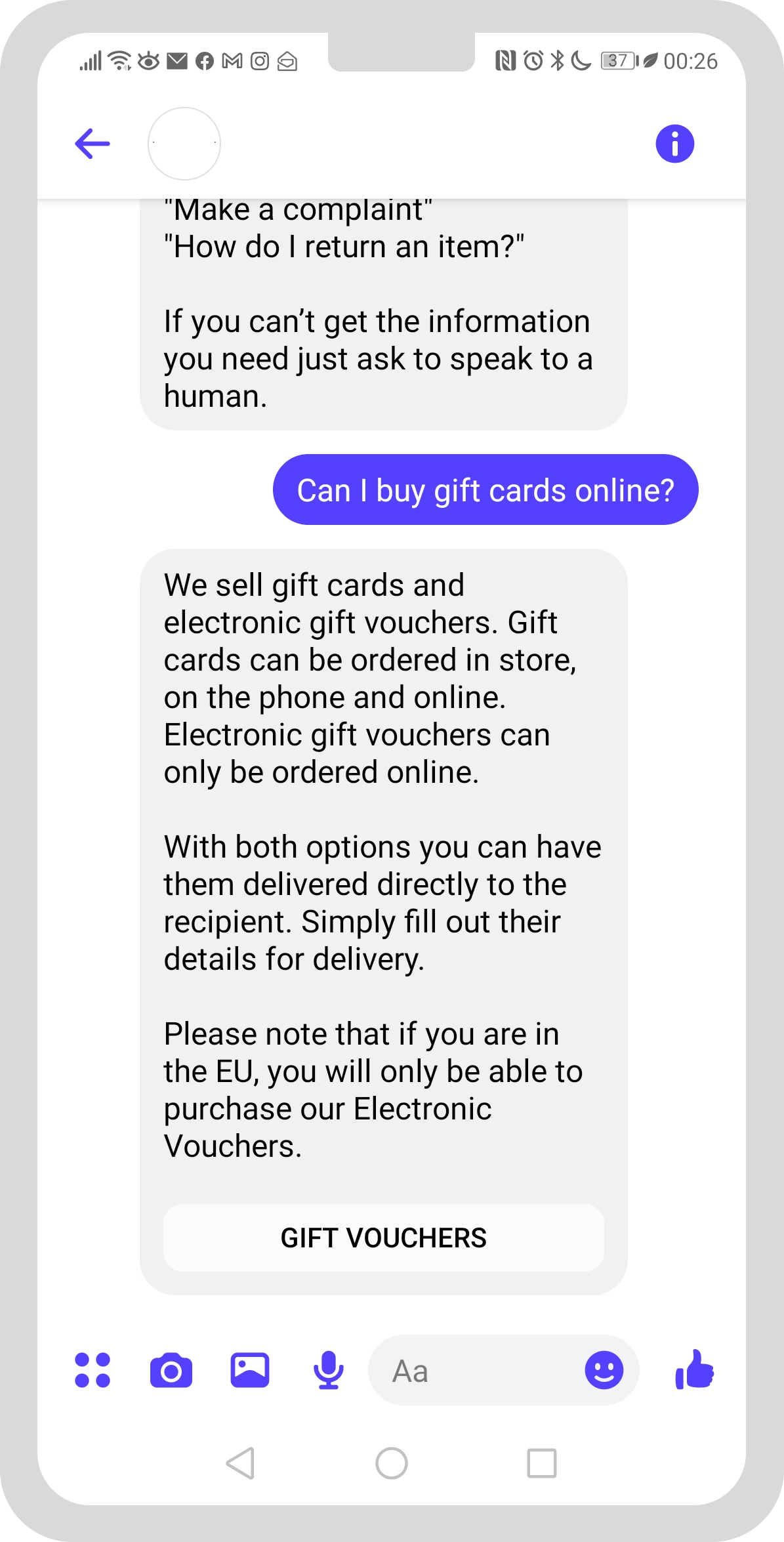
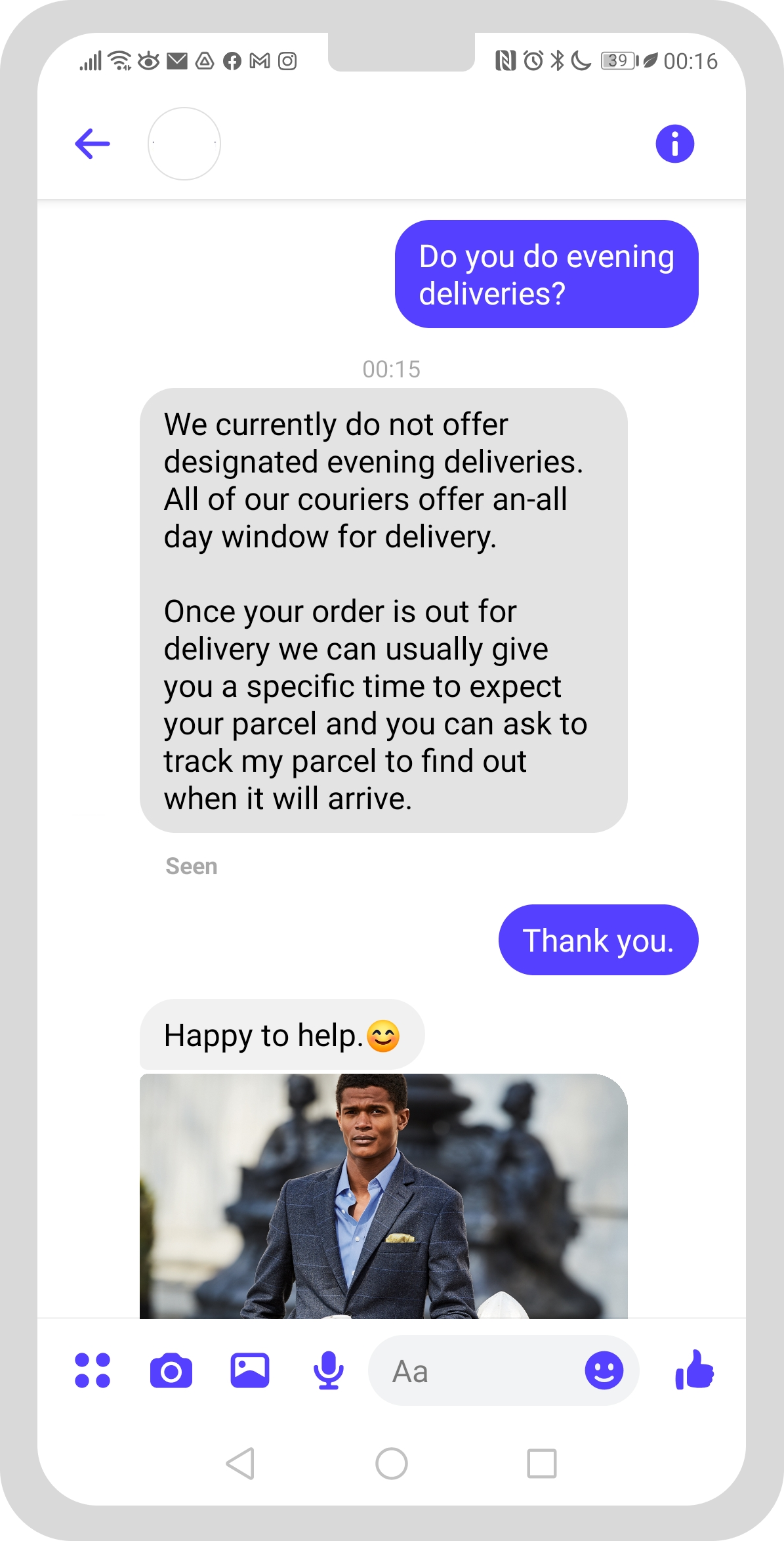
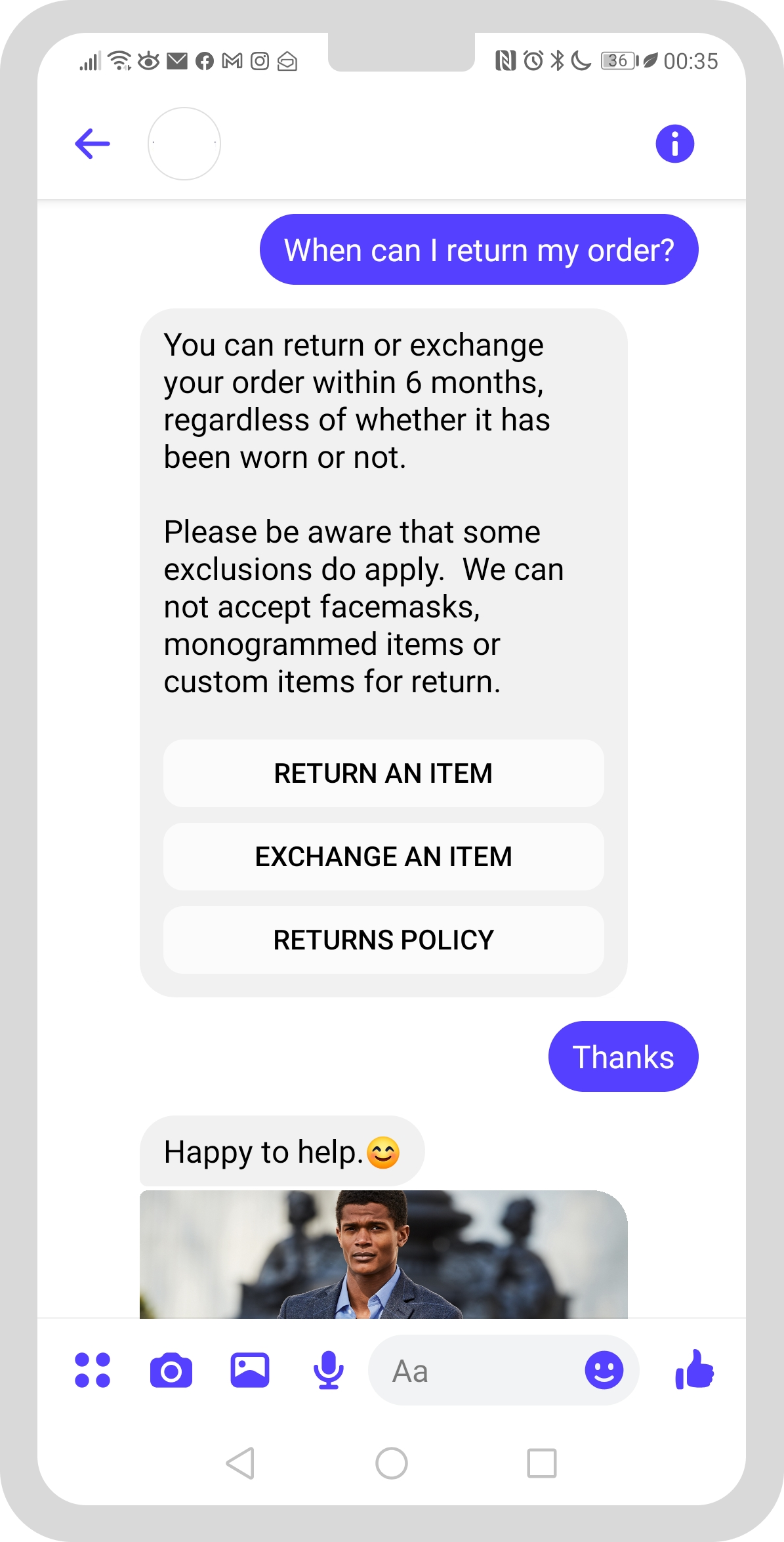

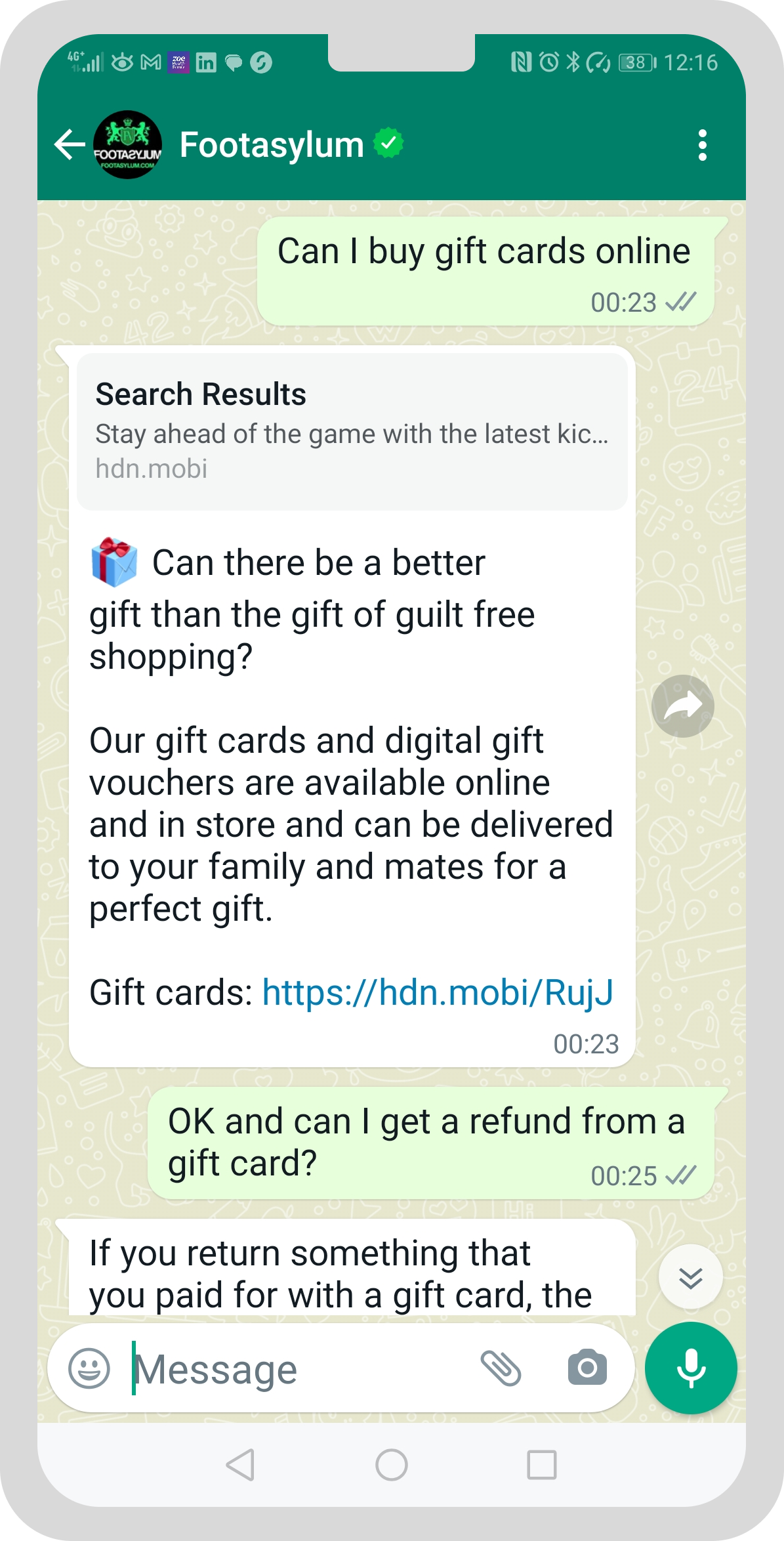
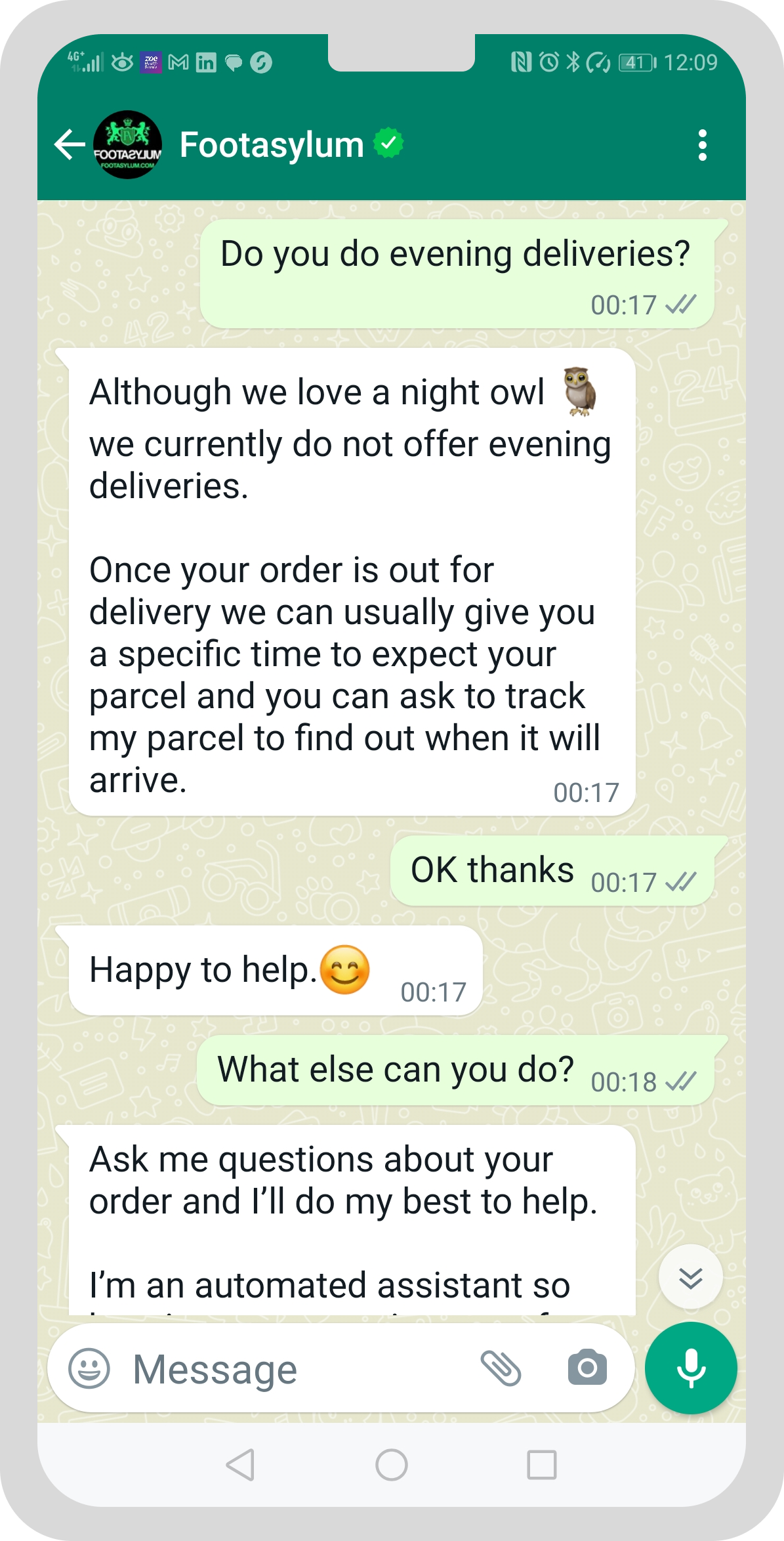
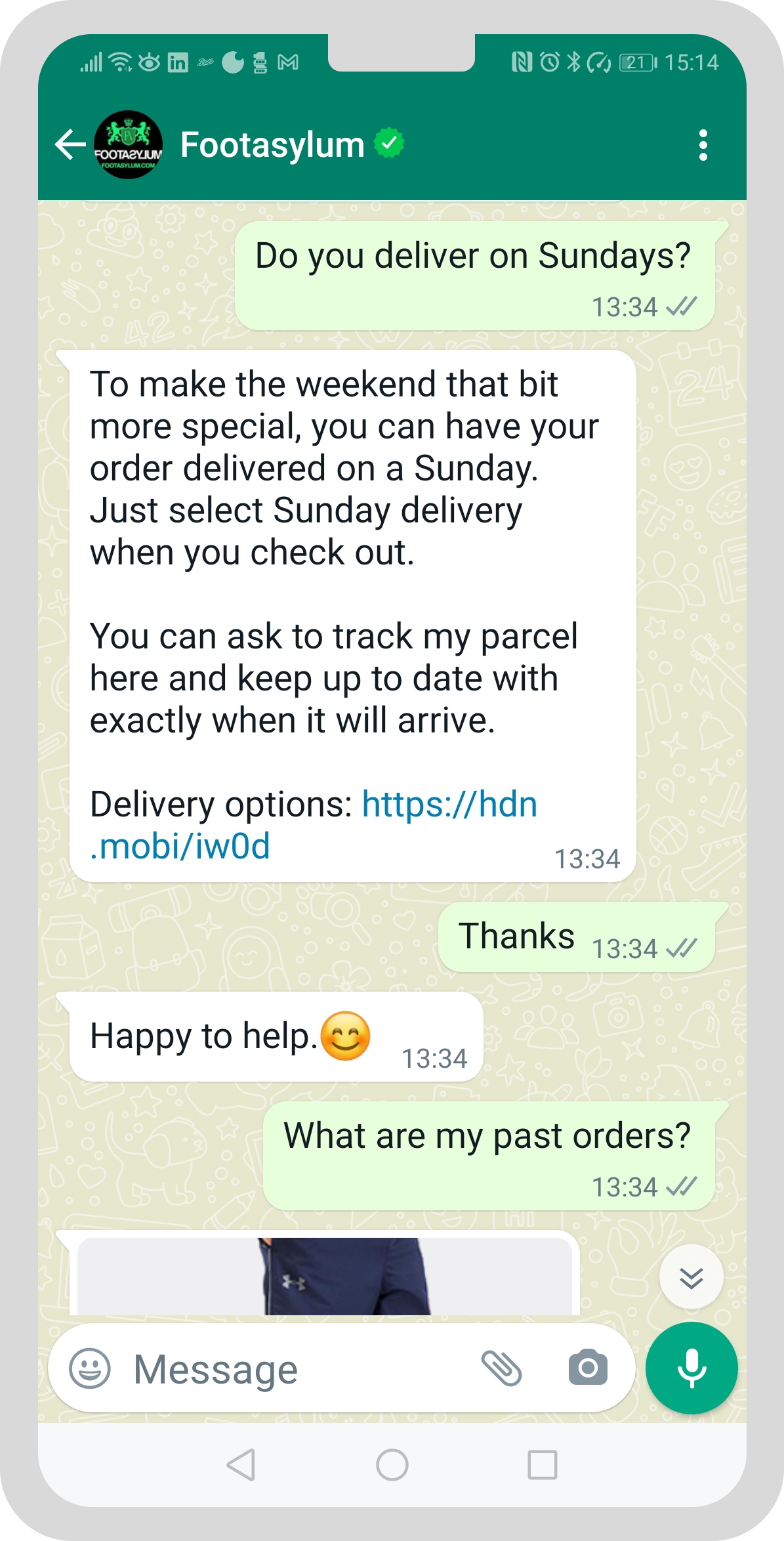
CREATE A SYSTEM
Having two sets of "out of the box" utterances was the first part of the scalable system.
The second part was to make it easy to set up a new bot.
Before the team invested time in creating a user interface specifically for this job, we needed to test an MVP.
Using macros and formulae in excel, I created a spreadsheet that generated the client file for the NLP model, meaning all the bot utterances could be defined and code-ready in one session just by choosing options in the sheet.
OPT IN
Choice of whether to include a question or not (for example an online business would not need to answer many questions about bricks and mortar stores).
CHOICE OF TONE
Polite or chatty pre-designed utterance, or client’s own customised response.

LOCALISATION
Change variables like phone numbers or spelling according to region.
ADD URL
Add URLs for more information or to take action (for example, return a product).
OUTCOME
New clients using the new system selected 75% of their answers from the pre-designed utterances.
Onboarding time was dramatically reduced from weeks to hours.
Training sets could be re-used, leading to greater efficiency in the code and all clients sharing the benefits of being in the same niche.
WHAT I'D DO NEXT
Develop a user interface for clients to set up their bot.
Check whether the two tones hypothesis works outside the UK for international expansion.
Continuous research to check that bot is answering user needs.
